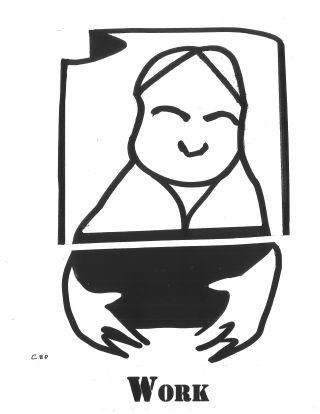Adolescence
Explaining to Adolescents the Power of Practice
Sometimes repetitively boring, practice can improve competence and conditioning.
Updated June 20, 2023 Reviewed by Abigail Fagan
Key points
- Adolescents can resist practice because it feels like boring work.
- Parents can encourage practice because it is a valuable life skill.
- Behavior change requires willingness to practice doing differently.

Adolescence can give practice (investing repeated effort in work to maintain or strengthen some capacity or habit) a bad name.
At an age when new and different and novel and exciting activities command interest, repeating familiar exercises like on homework, for example, can feel like a waste of valuable time. “I hate practice! It’s doing the same thing over and over! It’s boring! It's a waste of time! It’s worthless! Why would anyone want to practice?”
The positives of practice
Parents need to have a positive answer to this question because practicing turns out to be a very valuable life skill. For example, practicing is essential for:
- Building supports like routines: “I learned to schedule and organize my assignments back in middle school.”
- Focusing energy like paying attention: “I can concentrate on what I need to do."
- Training capacity like mastery in a skill: “I’ve put in a lot of time to perform this well.”
- Changing behavior like self-correction: “I used to procrastinate, but now mostly get things done on time.”
- Improving performance like competitive play: “I’ve gotten better by playing against others.”
- Adjusting to change like family restructuring: “I’ve had to get used to the divorce, and going back and forth between two homes.”
- Increasing stamina like strengthening conditioning: “Being a military kid, I’ve gotten good at starting a new school every couple of years.”
- Strengthening self-discipline like the will to work: “I can make myself do what I don't like to do.”
Becoming good at practicing can benefit a teenager in many ways.
When you treat practice as an investment in your well-being, it can help you:
- Learn to do something new;
- Build skills and conditioning;
- Improve one's performance;
- Maintain operating capacity.
Practice is easiest when it is interesting or fun to do, when there is some incentive attached to doing it, and sometimes when one has company in the doing. So, wanting to “get in shape,” into better physical condition, the young person elects to go to regular fitness sessions because the practice of working out in a group feels more congenial than doing so alone.
Practicing behavior change
Then there is practice as approximation or pretense — you “act” how you would like to become. To some degree, we are creatures of our own creation.
You can become outspoken by practicing speaking up.
You can become independent by practicing more responsibility.
You can become honest by practicing more truth-telling.
You can become trustworthy by practicing meeting commitments.
You can become solvent by practicing saving more of what you earn.
You can become athletic by practicing to play a recreational sport.
You can become social by practicing joining groups and organizations.
With practice, people learn to shape and reshape themselves all the time. Practice can be a formative act in this way. “With practice, I can change how I live within myself and with other people.”
When practice can harm
Of course, practice can cut two ways. Double-edged, it can create self-enhancing habits that are beneficial, but it can also beget self-defeating habits that are harmful. So the teenager, curious and feeling under some party pressure to conform to her vaping friends, declares: “Okay, I’ll try it once, but that’s all.” However, similar choices on subsequent social occasions may lay the foundation for regular use. Repetition is seductive this way.
Practice can create ongoing practices — habit patterns that gather automatic decision-making power of their own that one regularly depends upon without thinking. These can prove to be a mixed blessing. To the good, these practices can create healthy regimens and efficient routines to rely on; at worst, these practices can support unhealthy compulsions and destructive addictions which can be very hard to break.
If struggling to free oneself from a self-destructive habit of the compulsive kind, membership in a support group like of the 12-step kind, behavioral counseling, or dependency treatment (or some combination of these) can provide valuable outside help.
As the building block of habits, practice can be productive or problematic. It’s often easier to get into than out of a bad habit, but it’s usually worth investing in good habits because they can take good care of you. While good habits can keep you going; bad habits can do you in.
The Takeaway
- Practice is the repeated effort it takes to learn something new, maintain one's capacity, or improve one's performance.
- Practice is habit-forming because consistently acting one way makes it easier and more likely that one will act that way again.
- Practice makes people creatures of habit sometimes depending on familiar patterns of behavior without much second thought.
- Practice establishes patterns for personal behavior that are automatically followed, some to the good, and some that are not.
Thus, parental advice to their teenager might be: “When it comes to skill development, maintenance, and improvement, practice can't be beat. But also beware: Repeat your good habits because they keep you functioning well, but should you ever feel trapped in practicing a harmful habit, that may be a time for help to get yourself out.”




